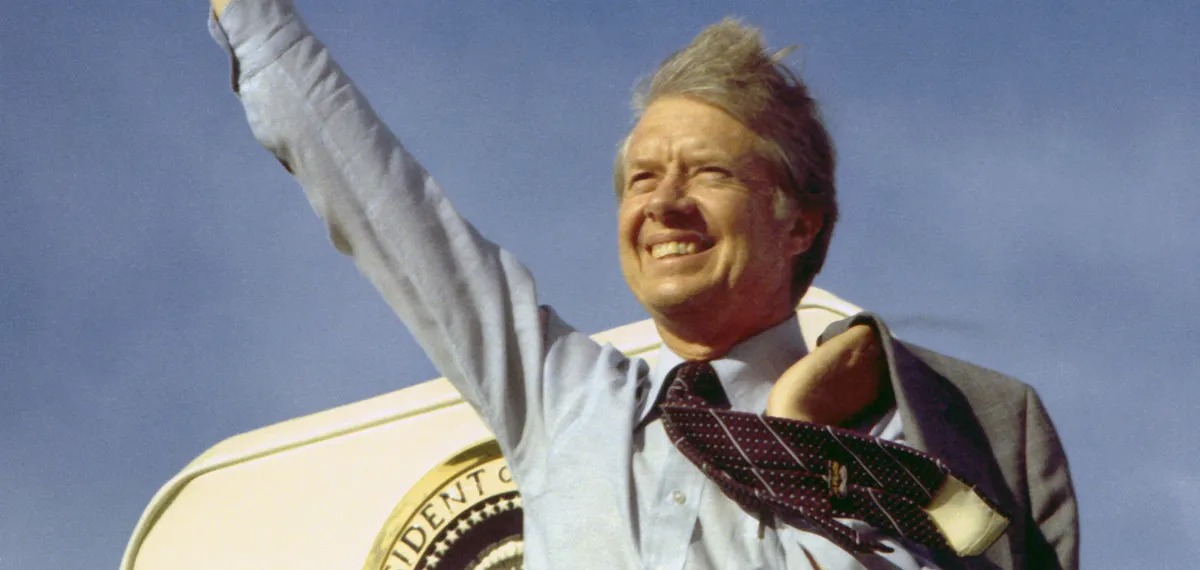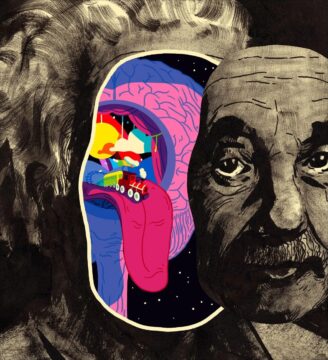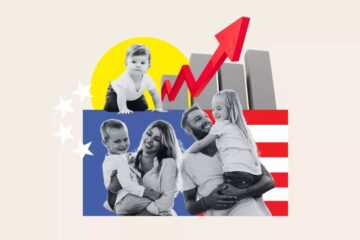Fugitive Beauty
The term “fugitive beauty” came
to me in a letter. A friend’s wife
used it in conversation. My friend
is a painter who studied in Paris.
I sought his opinion on poetry.
Fugitive beauty, evanescent, fleeting,
as if it implied a criminality
I did not understand.
Did all art start that way —
alone, fugitive, so coiled
in its incubation that it feared
possible success or failure?
Fugitive, running away,
not standing with the norm, the herd,
not strong enough
to be judged?
Or did it mean beauty as Keats meant it?
“Truth is beauty, beauty is truth” —
a raw truth, or a new dimension of beauty,
a new adjective
to describe eagles soaring,
no parameters,
like prisoners breaking out.
Out there by itself,
not great, not mediocre,
but flying in its own space
against all normalcy, blasting off
to its own truthfulness,
Its own freedom.
by George Degregorio
from Zerilda’s Chair
White Chicken Press
Rutherford, NJ, 2009
Enjoying the content on 3QD? Help keep us going by donating now.

 The story starts in 1974 when
The story starts in 1974 when  A good New Year’s resolution might be to experiment what “doing nothing” might mean for your life, and trying to notice how it changes your worldview—and opens you up to imagine the possibility of other, larger, more systemic changes in society. Opt out of literally every possible thing you can. Cancel everything you currently have on auto pay, or at least the things you don’t absolutely need to survive, like subscriptions to household goods, take-out app memberships, and Substack newsletters full of product recommendations. Opt out of all after-school activities for your kids—all the driving around, and the new gear. Clear your schedule. And then start adding back in the things that bring you connection and joy.
A good New Year’s resolution might be to experiment what “doing nothing” might mean for your life, and trying to notice how it changes your worldview—and opens you up to imagine the possibility of other, larger, more systemic changes in society. Opt out of literally every possible thing you can. Cancel everything you currently have on auto pay, or at least the things you don’t absolutely need to survive, like subscriptions to household goods, take-out app memberships, and Substack newsletters full of product recommendations. Opt out of all after-school activities for your kids—all the driving around, and the new gear. Clear your schedule. And then start adding back in the things that bring you connection and joy.  Fire-engine red. Egg-yolk yellow. Christmas-tree green. The palettes of this year’s potential Oscar contenders can be summed up in one word: Bold. “Everybody on Pedro’s sets ends up wearing really strong colors,” said Inbal Weinberg, the production designer who dreamed up the striking, primary color-heavy visual aesthetic for Pedro Almodóvar’s euthanasia drama, “The Room Next Door.”
Fire-engine red. Egg-yolk yellow. Christmas-tree green. The palettes of this year’s potential Oscar contenders can be summed up in one word: Bold. “Everybody on Pedro’s sets ends up wearing really strong colors,” said Inbal Weinberg, the production designer who dreamed up the striking, primary color-heavy visual aesthetic for Pedro Almodóvar’s euthanasia drama, “The Room Next Door.” The Hungarian folktale Pretty Maid Ibronka terrified and tantalised me as a child. In the story, the young Ibronka must tie herself to the devil with string in order to discover important truths. These days, as a PhD student in philosophy, I sometimes worry I’ve done the same. I still believe in philosophy’s capacity to seek truth, but I’m conscious that I’ve tethered myself to an academic heritage plagued by formidable demons.
The Hungarian folktale Pretty Maid Ibronka terrified and tantalised me as a child. In the story, the young Ibronka must tie herself to the devil with string in order to discover important truths. These days, as a PhD student in philosophy, I sometimes worry I’ve done the same. I still believe in philosophy’s capacity to seek truth, but I’m conscious that I’ve tethered myself to an academic heritage plagued by formidable demons. Isaac Newton’s lifelong quest to transmute base metals into gold is normally forgiven as a symptom of the pre-scientific nature of his age. But “great minds holding eccentric, even kooky, beliefs” is a pattern that crops up throughout history. Even after there became strong social reasons for scientists to disguise even the faintest whiff of the irrational. William James, the godfather of psychology, believed in ghosts. Fred Hoyle, who came up with the idea that stars created chemical elements via nuclear fusion, thought that influenza came from space. Nikola Tesla was obsessed with the number three. Nobel Prize winner Wolfgang Pauli believed that his mere presence could drive laboratory equipment to malfunction. Kurt Gödel starved himself to death out of fear of being poisoned. Brian Josephson, a still-living Nobel laureate, thinks that water has memories.
Isaac Newton’s lifelong quest to transmute base metals into gold is normally forgiven as a symptom of the pre-scientific nature of his age. But “great minds holding eccentric, even kooky, beliefs” is a pattern that crops up throughout history. Even after there became strong social reasons for scientists to disguise even the faintest whiff of the irrational. William James, the godfather of psychology, believed in ghosts. Fred Hoyle, who came up with the idea that stars created chemical elements via nuclear fusion, thought that influenza came from space. Nikola Tesla was obsessed with the number three. Nobel Prize winner Wolfgang Pauli believed that his mere presence could drive laboratory equipment to malfunction. Kurt Gödel starved himself to death out of fear of being poisoned. Brian Josephson, a still-living Nobel laureate, thinks that water has memories. Fussier friends would shiver in the mid-October wind, but Ann Mandelstamm is in her eighties and still hiking, so I grab a table on the patio. Just as I open the menu, she arrives, clad in a sporty navy sweater and jeans and wearing her trademark red lipstick, her red-gold hair pulled back with combs. She sits, her movements as lithe and graceful as ever. She has always had a quiet, midcentury glamour about her—the Kate Hepburn sort, impatient with frippery. Neither of us even mentions moving indoors.
Fussier friends would shiver in the mid-October wind, but Ann Mandelstamm is in her eighties and still hiking, so I grab a table on the patio. Just as I open the menu, she arrives, clad in a sporty navy sweater and jeans and wearing her trademark red lipstick, her red-gold hair pulled back with combs. She sits, her movements as lithe and graceful as ever. She has always had a quiet, midcentury glamour about her—the Kate Hepburn sort, impatient with frippery. Neither of us even mentions moving indoors. After the Soviet bloc began to disintegrate on his watch, Reagan was—and still is—mythologized as the primary victor of the Cold War.
After the Soviet bloc began to disintegrate on his watch, Reagan was—and still is—mythologized as the primary victor of the Cold War. Billions of cells die in your body every day. Some go out with a bang, others with a whimper. They can die by accident if they’re injured or infected. Alternatively, should they outlive their natural lifespan or start to fail, they can carefully arrange for a desirable demise, with their remains neatly tidied away.
Billions of cells die in your body every day. Some go out with a bang, others with a whimper. They can die by accident if they’re injured or infected. Alternatively, should they outlive their natural lifespan or start to fail, they can carefully arrange for a desirable demise, with their remains neatly tidied away. The U.S. population will age and continue to see low growth in 2025, three experts have told Newsweek.
The U.S. population will age and continue to see low growth in 2025, three experts have told Newsweek. In his newsletter, Sam Harris
In his newsletter, Sam Harris  Here are some of the most important studies to date documenting how COVID-19 affects brain health:
Here are some of the most important studies to date documenting how COVID-19 affects brain health: Even if you haven’t read Robert Musil’s unfinished modernist masterpiece, The Man Without Qualities, you probably agree that it has a great title. If you have read it, I’m sure you agree, because the novel returns obsessively to the theme of how its main character, Ulrich, can’t quite get his act, or, more fundamentally, his personality, together. But I’ve come up with an even better title. I think Musil should have called his novel The Man Without Philosophy.
Even if you haven’t read Robert Musil’s unfinished modernist masterpiece, The Man Without Qualities, you probably agree that it has a great title. If you have read it, I’m sure you agree, because the novel returns obsessively to the theme of how its main character, Ulrich, can’t quite get his act, or, more fundamentally, his personality, together. But I’ve come up with an even better title. I think Musil should have called his novel The Man Without Philosophy.